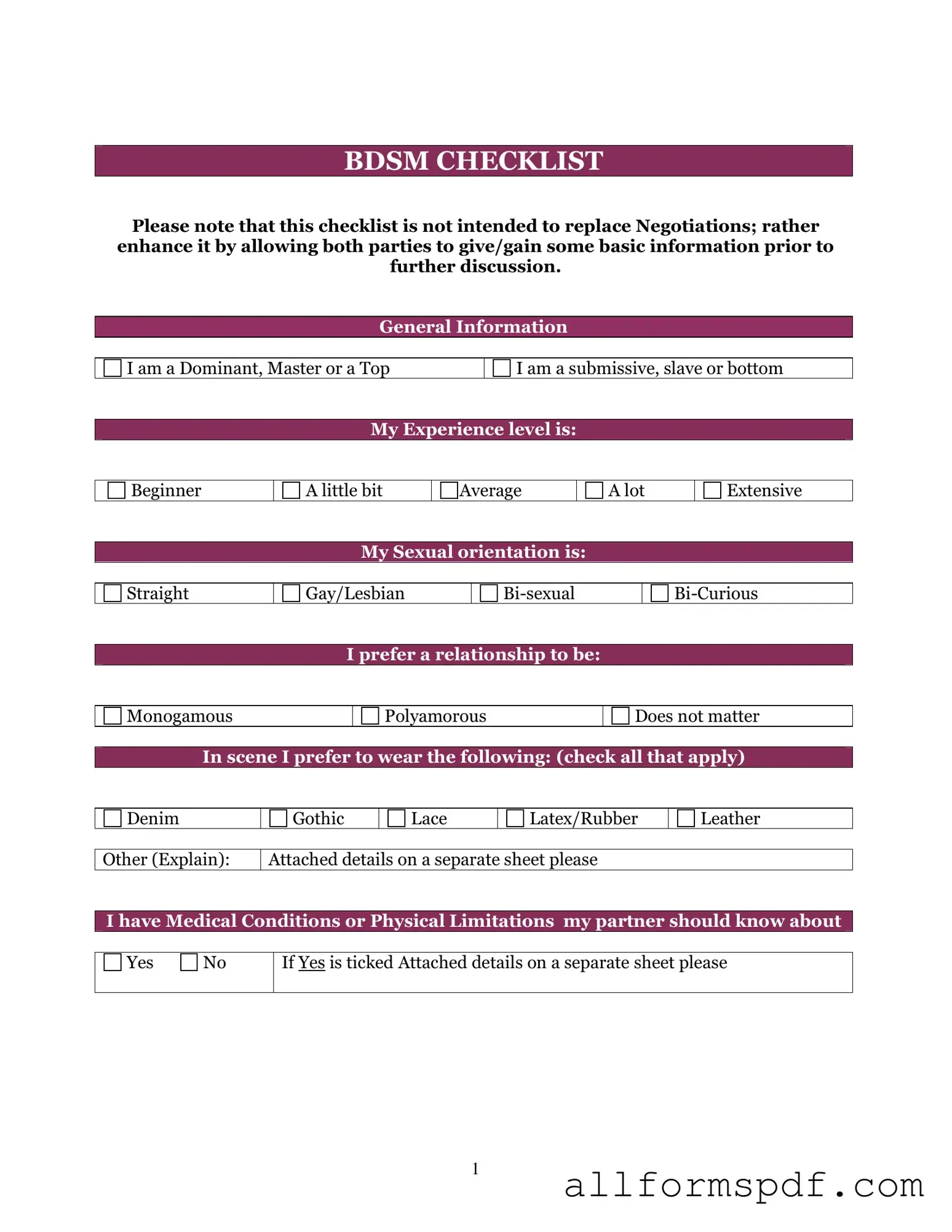Fill Out Your Bdsm Checklist Form
The BDSM Checklist form is a tool used to outline preferences, limits, and interests in BDSM practices. It serves as a communication guide between partners, ensuring that all parties are informed and comfortable with the activities they engage in. By filling out this checklist, individuals can foster a safer and more consensual experience.
Create My Bdsm Checklist Now
